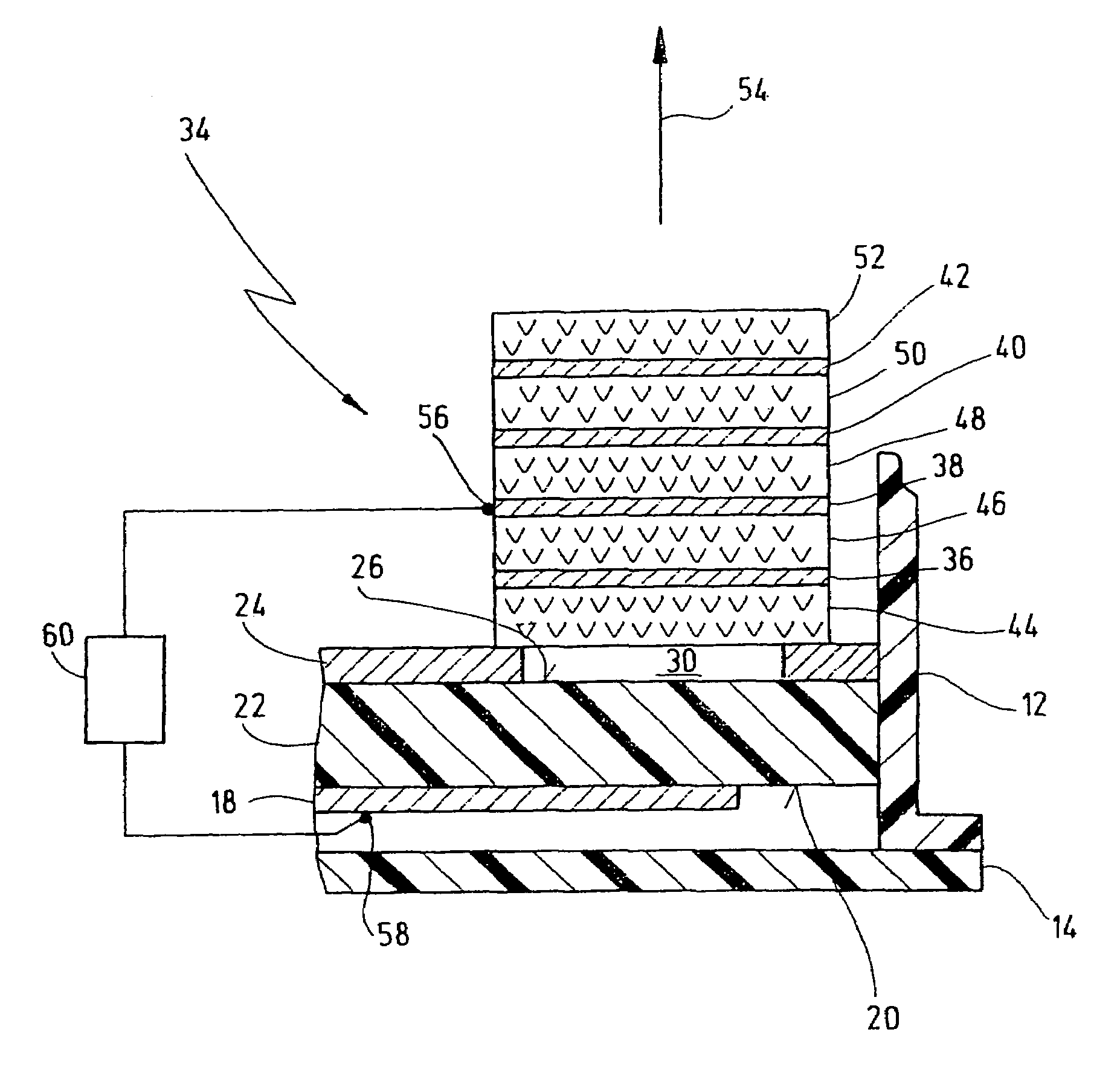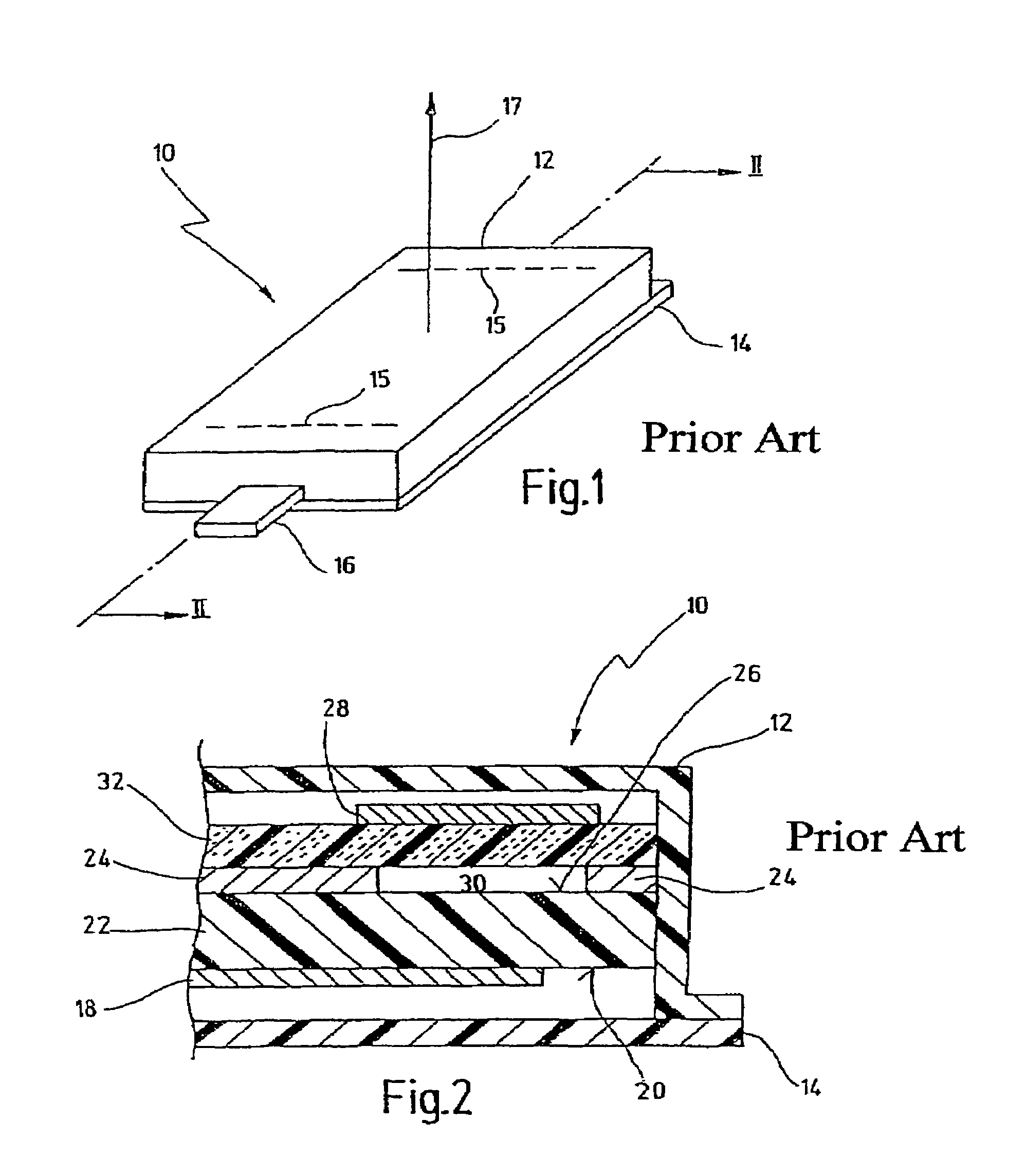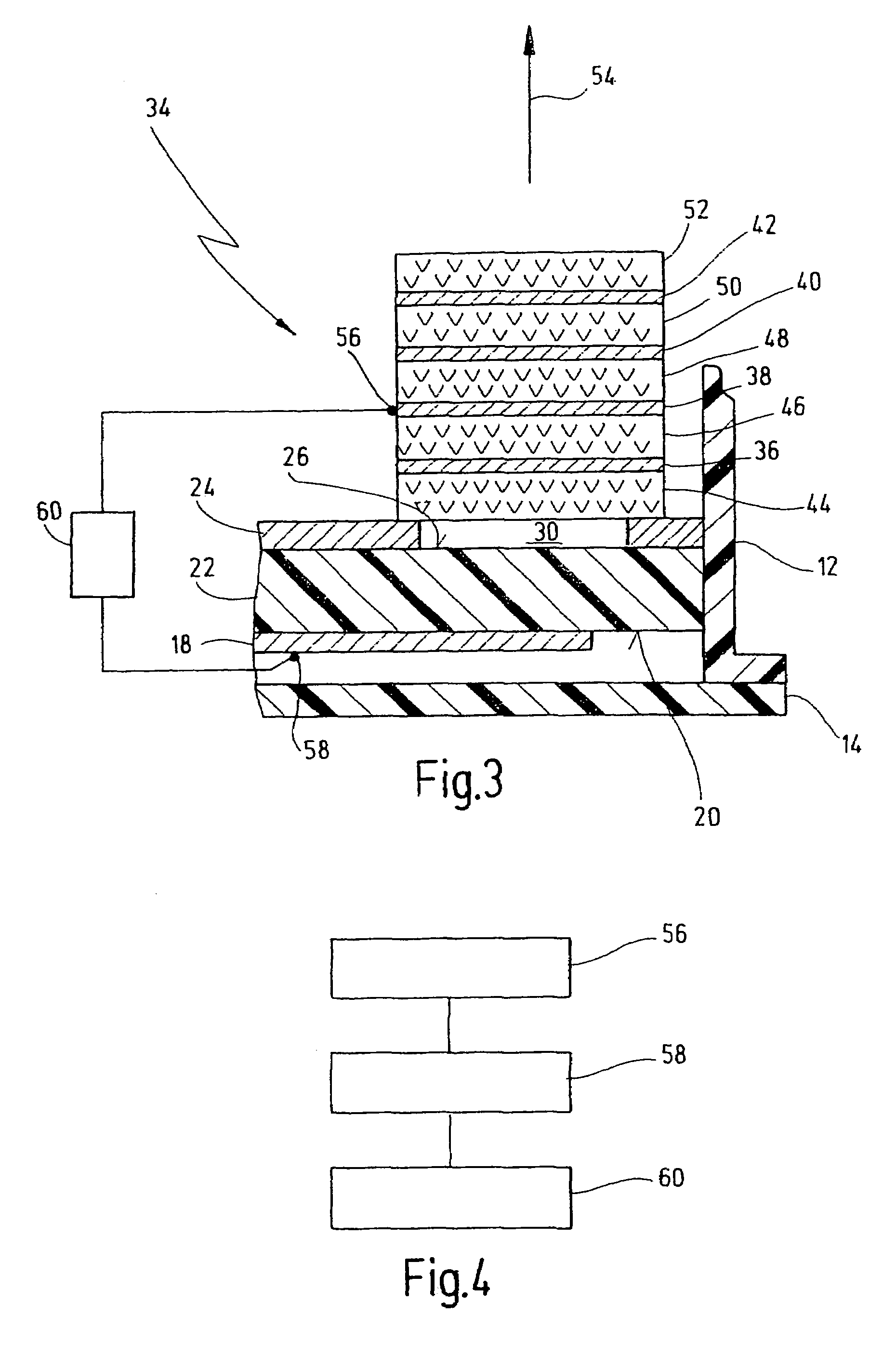Radar sensor for use with automobiles
a technology for radar sensors and automobiles, applied in the field of radar sensors, can solve the problems of plurality of patches, large space, and inability to use short wave lengths in the microwave region together with conventional components, and achieve the effect of increasing the directionality of the antenna
- Summary
- Abstract
- Description
- Claims
- Application Information
AI Technical Summary
Benefits of technology
Problems solved by technology
Method used
Image
Examples
Embodiment Construction
[0039]Reference symbol 10 of FIG. 1 designates a schematic overall view of a radar sensor having a housing 12, which is sealed by a lid 14. The dash lines 15 indicate the direction of orientation of the radiation elements within the housing 12. Reference symbol 16 designates a connecting element by means of which the radar sensor 10 can receive e.g. a power supply voltage and / or by means of which the radar sensor 10 can send or receive signals to and from a controlling apparatus of a motor vehicle. The arrow designated with reference symbol 17 indicates the direction of the longitudinal axis of the motor vehicle.
[0040]The orientation of the radar sensor 10 relative to the direction 17 of the longitudinal axis represents the typical assembled position of the radar sensor 10 in a motor vehicle application. However, the invention is clearly not limited to such a relative direction between the radar sensor 10 and the direction 17 of the longitudinal axis of the motor vehicle.
[0041]FIG. ...
PUM
 Login to View More
Login to View More Abstract
Description
Claims
Application Information
 Login to View More
Login to View More - R&D
- Intellectual Property
- Life Sciences
- Materials
- Tech Scout
- Unparalleled Data Quality
- Higher Quality Content
- 60% Fewer Hallucinations
Browse by: Latest US Patents, China's latest patents, Technical Efficacy Thesaurus, Application Domain, Technology Topic, Popular Technical Reports.
© 2025 PatSnap. All rights reserved.Legal|Privacy policy|Modern Slavery Act Transparency Statement|Sitemap|About US| Contact US: help@patsnap.com



